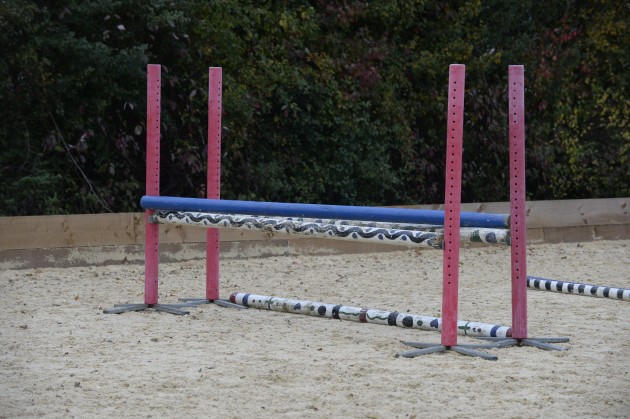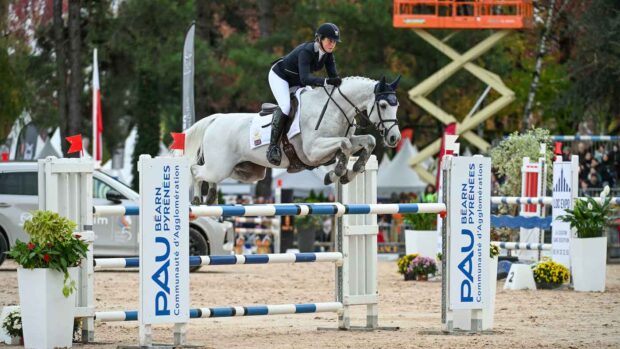Is your horse inclined to speed up or get excited when he sees a fence? Top eventer Piggy French has five useful tips to help you nail clear showjumping rounds.
1. Keep it varied
“The key to excitable horses is keeping their brain engaged and focusing on the rider,” says Piggy. “Ride lots of circles of different sizes on both reins. If the horse spooks or tries to run off, ride a small circle rather than letting them fool around for too long.”
When a horse becomes less erratic, they are able to concentrate.
“If they knock a fence down, they are more likely to learn from it,” adds Piggy. “But if they are hot-headed and not focusing, hitting a fence won’t register and they will keep having them down.”
2. Slow everything down by trotting
Trot to every fence and return to trot as quickly as you can after landing, but in a smooth way. By slowing things down, the horse can —
• Think where their legs are and leave the poles in place
• Learn from their mistakes
• Make a good shape over the fence
• Work with their rider rather than giving an unpleasant ride
• Chill out in their mind
3. Use V poles to improve the jump

Place two poles against a fence, in an upside down V shape (pictured above). This encourages horses to tuck in their legs and be sharper in the way they jump.
“V poles improve how they use their front legs and stops them being untidy,” explains Piggy. “Start with the top of the poles apart and, as the horse gets more relaxed, close them up.”
Like this? You might also enjoy reading these:
5 ways lungeing will transform your riding
9 ways to train your horse out hacking for success on competition day
4. Landing poles will make him look
Place a pole behind a fence so that the horse crosses it in their first stride after landing.
“A landing pole encourages horses to drop their head and look,” says Piggy. “Some hot horses are very brave, which means they don’t naturally back themselves off a jump. The pole makes them look down and think about what they’re doing rather than speeding away.”
5. Add a diagonal pole to get more lift

Lay a pole diagonally across the top of an oxer (pictured, above).
“This is useful for horses who are careless or have a flat jump, as it encourages them to get up into the air more,” explains Piggy.
Ref: H&H 30/7/15




